Canada’s economy has turned into an economic disaster zone.
The nation’s population has experienced an unprecedented population boom that has overshot even the most bullish “high growth” projections of Statistics Canada:

The population of the country increased by 1.4 million more people in 2022 than what Statistics Canada predicted in its “median growth scenario”, as shown above by economists at the National Bank of Canada.

The surge in population, which has been driven purely by net overseas migration, has created an unprecedented rental crisis in Canada:

Rents in Canada are rising at their fastest pace in generations, while the rental vacancy rate has collapsed to a record low.
The surge of migrants has also overwhelmed Canada’s productivity capacity, resulting in “capital shallowing”:
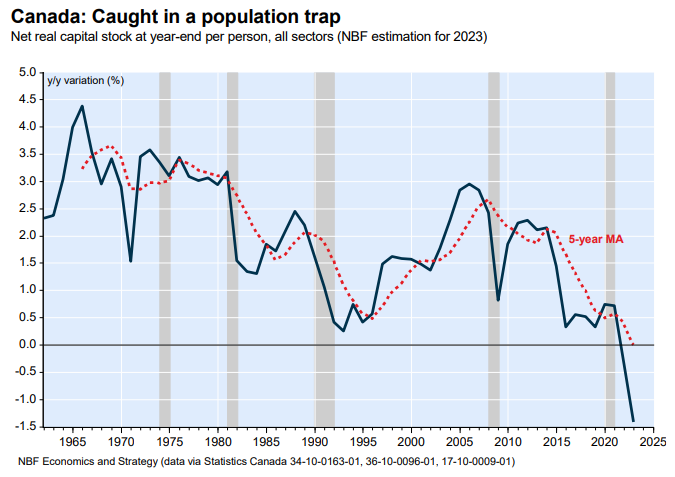
Business investment, infrastructure, and housing have failed to keep pace with Canada’s extreme population growth, resulting in collapsing productivity:

As a result, Canada’s real GDP per capita is expected to have fallen for 19 of the past 21 months:
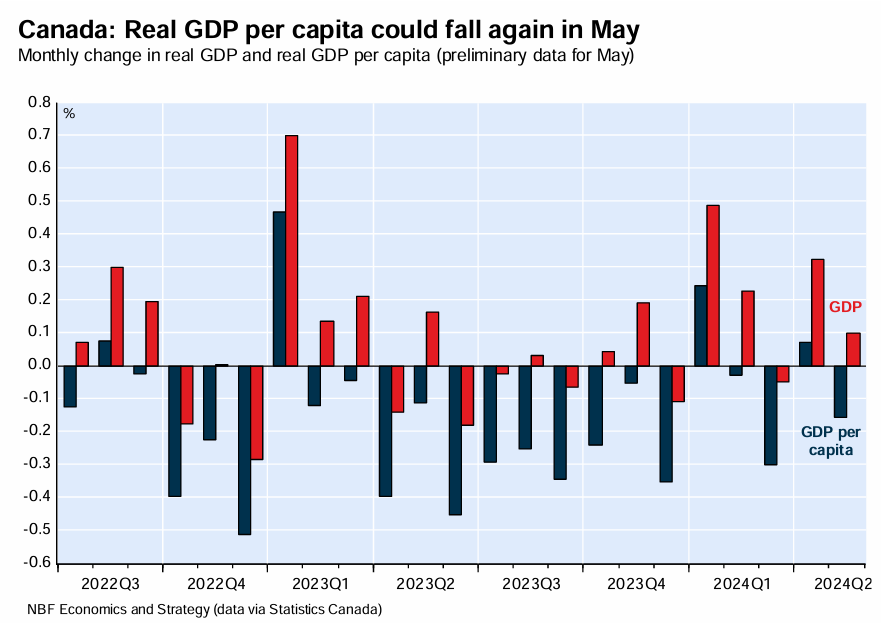
Canada’s real per capita GDP has also experienced minimal change from a decade ago:
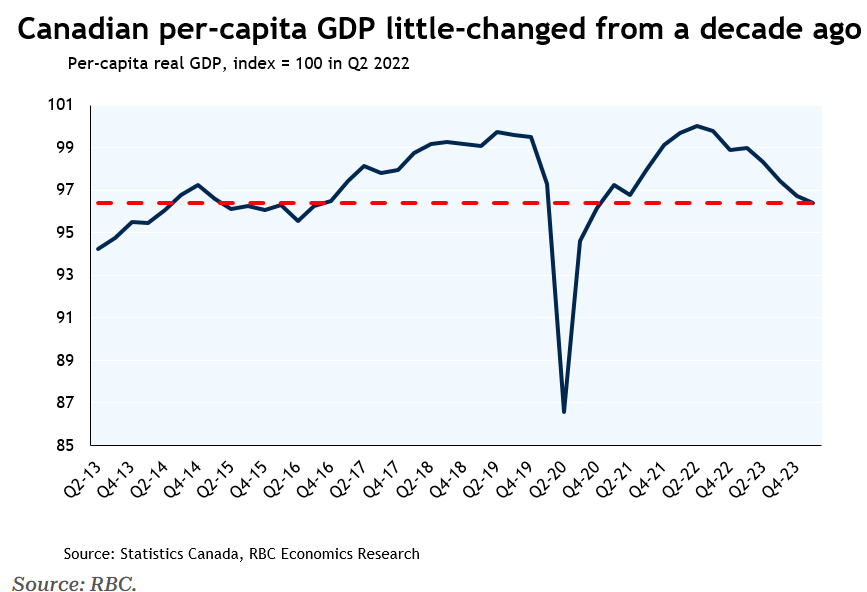
Meanwhile, the flood of migrant labour into Canada has oversupplied the economy with workers, with 13 out of 15 sectors seeing a decline in output per employee between Q3 2022 and Q1 2024:
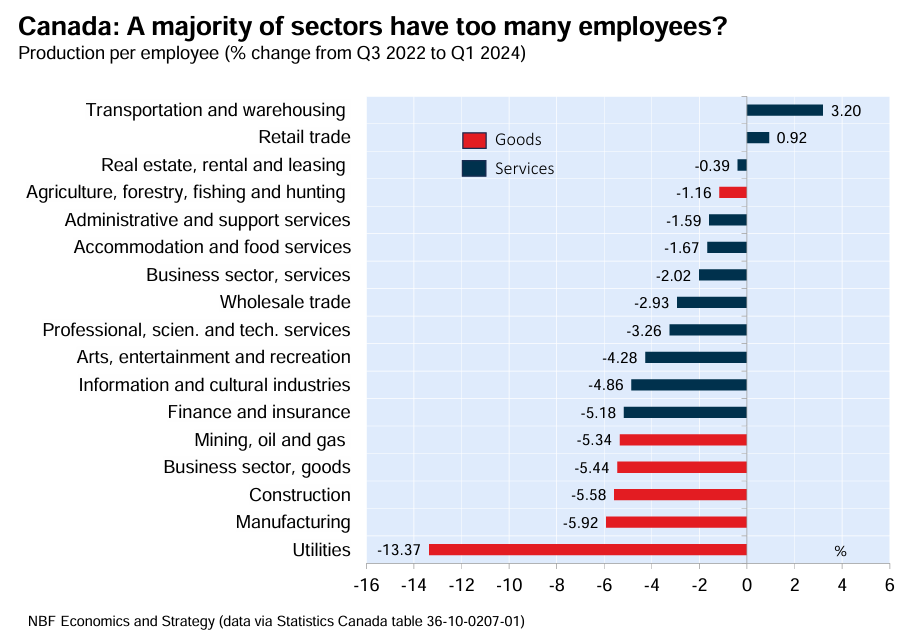
Canada’s unemployment rate has shot up to 6.4% as of June, up 1.6% from its July 2022 trough. The rise in unemployment would have been worse had it not been for the fall in the participation rate.

The weak job market is having a significant impact on individuals trying to enter the workforce.
Economists at the National Bank of Canada noted that students had the lowest employment rate since 1998, whereas new migrants are also struggling to enter the labour market, with their unemployment rate rising to 12.7% in June on a 3-month moving average basis, for a total increase of 5.8 percentage points since its trough.
“This is equivalent to the variation seen in the 2008-09 recession”, the economists noted. “Job creation hasn’t kept pace with the population’s meteoric rise for some time now”.
While the situation is less dire in Australia, there are clear similarities with Canada.
In 2023, Australia’s population increased by 651,200, owing to a record net overseas migration of 547,200:
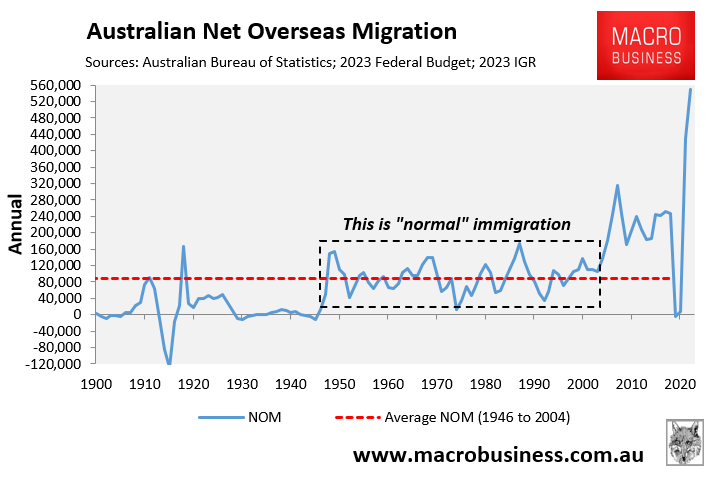
In fact, Australia received just under one million net overseas migrants over the 2022 and 2023 calendar years, more than doubling the projections of the Albanese government’s first federal budget in October 2022:

Source: October 2022 Federal Budget
The enormous increase in net overseas migration has created a historic gap between housing supply and population demand:

As a result, Australia’s rental inflation rose by 7.4% in the year to May:
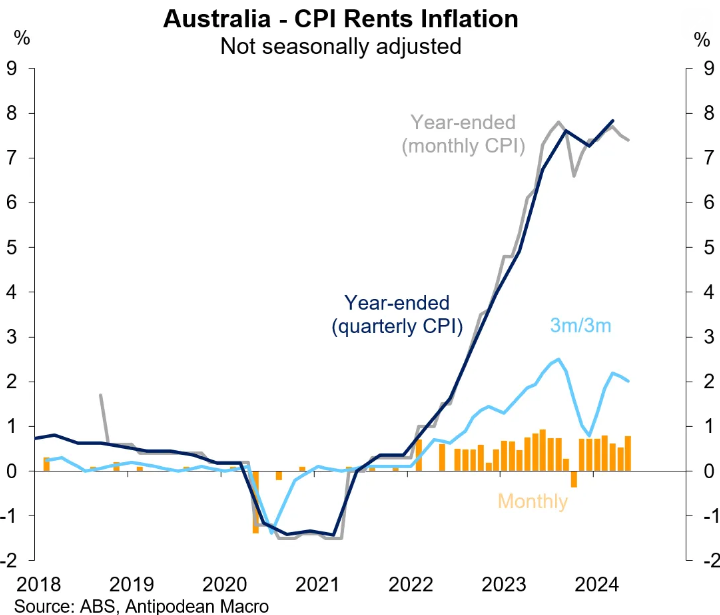
However, if the federal government had not increased Commonwealth Rent Assistance, rental inflation in Australia would have climbed by 9.3% – similar to Canada’s rental inflation.
Like Canada, decades of excessive immigration have created “capital shallowing” and declining productivity growth as the population has grown faster than business, infrastructure, and housing investment:

As a result, Australia has experienced declining per capita GDP growth and is currently mired in a deep per capita recession.
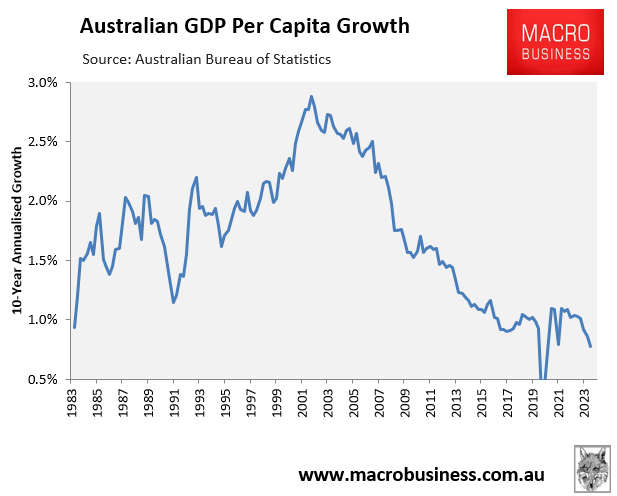
While Australia’s official unemployment rate is still low, forward-looking indicators show that labour supply is growing well ahead of demand, resulting in a sharp decline in job vacancies and a sharp rise in job applicants:

Canada should serve as a stark warning sign of what will happen to Australia if it continues to follow the same high immigration growth model.
This growth model has been an demonstrable failure in both countries and must be abandoned as a matter of priority.

